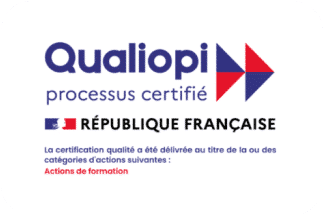Definition of an e-learning community
An e-learning community is a group of individuals, including one or more trainers/teachers, who are connected to one another via a digital medium (using a computer, smartphone or tablet, for example). This group of learners have a shared outlook and goals in terms of expanding their knowledge or learning new skills and abilities. Learning communities are built on dialog and sharing.
Differences between face-to-face and e-learning communities
A face-to-face learning community is characterized by a unity of time, place and action. Learners meet in a designated location, at a set time, for a specific program (typically largely unvarying lecture-type lessons). Face-to-face learners all share the same experience at the same time. The group effect generates motivation. The trainer organizes tests to check learners’ commitment.
On the other hand, in an e-learning community this unity of time, action and place is broken. Interactions among learners or between learners and trainers are more numerous, but spread out over time.
An e-learning community is a stakeholder in a collaborative learning project. Learners feel less isolated when they have a sense of belonging to a community.
Online tutoring for e-learning communities
With e-tutoring, human interaction between the tutor and learner is underpinned by technical instrumentation that supports the e-tutor’s triple role:
• Coordination;
• Coaching;
• Technical assistance.
E-tutors perform three support functions when managing a professional learning community:
• Teaching support (providing knowledge and know-how)
• Organizational support (organizing work by helping e-learners identify good learning strategies)
• Psychological support (managing demotivation and failure)
Software for creating e-learning materials
To spark the interest of learners taking an e-learning course, good trainers harness the vast array of multimedia resources at their disposal, including audio, video, still images and animations):
Numerous learning management systems (LMS) exist to help trainers deploy e-learning content. These platforms let the trainer integrate content that trainees can then download. Some also offer authoring tools.
- Teaching software: everything from open source office suites to more complex programs
- Video software: Trainers should choose an educational tool that lets them quickly produce high-quality interactive videos. Many applications include features that let users edit images, create screencasts, generate zoom effects or resize PowerPoint slides.
For webinar-type online videos, free solutions (e.g. Skype) exist alongside more comprehensive applications with rich features (document sharing, virtual whiteboard, remote control of the learner’s computer, integrated quizzes with real-time scoring, etc.) - Audio software: Used to manage sound; use of a microphone is recommended.
Many freeware programs exist that let you encode, cut and combine audio formats, overlay a soundtrack onto a video, etc. - Image processing software: These tools let you make infographics or create short animations. Some support clickable buttons that let you provide information or comments.
Examples of software used to manage an e-learning community
- Collaborative work tools: mind mapping software can be used for scalable collective brainstorming. The best tools let you include all kinds of objects (images, sounds, infographics, etc.).
- Community management tools serve a variety of purposes, from structuring content to interacting with, monitoring and assessing learners. Consequently, they need to support rich interactivity.

